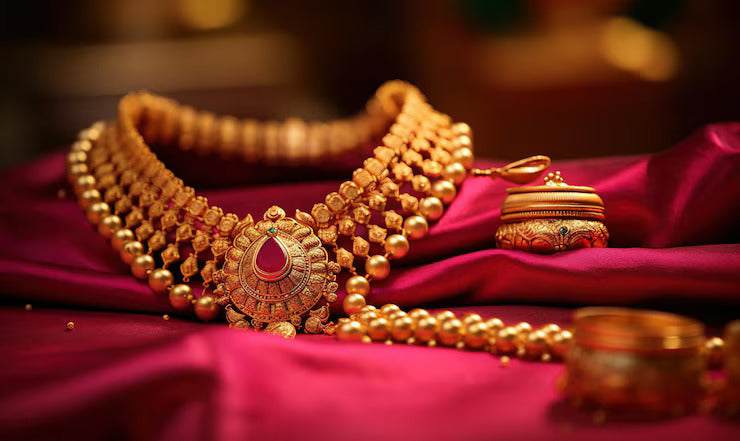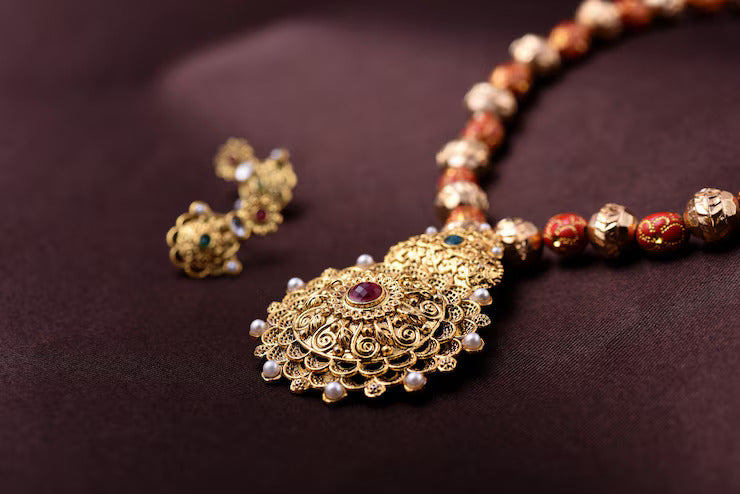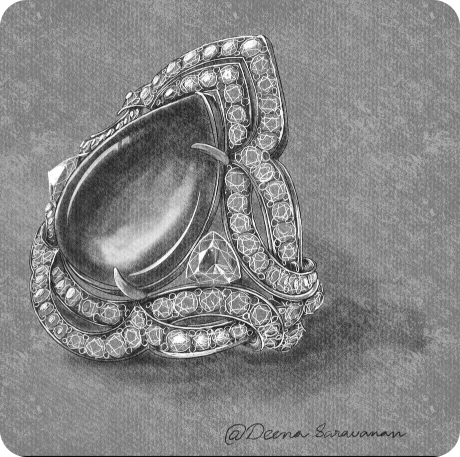Jewellery has long been more than just a decorative accessory. It is a deeply personal and cultural expression, a reflection of identity, tradition, and memory. Each piece of jewellery can carry with it an untold story—of love, lineage, power, spirituality, and transformation. From ancient heirlooms to modern designer pieces, jewellery acts as a storyteller, weaving together moments, histories, and emotions in gleaming metal and glittering stones.
The Origins of Storytelling Through Jewellery
Historically, jewellery has played a vital role in human societies. Archaeological discoveries reveal that as far back as 100,000 years ago, early humans adorned themselves with shells, bones, and beads. These early ornaments were not mere decorations—they signified social status, tribal affiliation, or even spiritual beliefs. For example, in Ancient Egypt, amulets and rings carried religious significance, often designed with protective symbols like the Eye of Horus or the scarab beetle. Each item had a story—a belief system, a message of protection, or a celebration of life and death.
Family Heirlooms: Carriers of Generational Tales
Perhaps the most emotionally resonant stories in jewellery are found in family heirlooms. These pieces are passed down from generation to generation, often tied to important life events. A grandmother’s wedding ring, a father’s cufflinks, or a mother’s gold chain—such items are embedded with memories and milestones. When inherited, they don’t just transfer material value but carry forward the narrative of one’s lineage. A simple locket might contain the photograph of a great-grandparent, symbolizing connection and continuity.
These heirlooms also often bear marks of age—scratches, tarnish, worn-out clasps—which only enrich their stories. They become living artifacts, silently narrating the passage of time and the people who cherished them.
Jewellery and Personal Milestones
From engagement rings to graduation pendants, jewellery is intimately tied to major life events. When someone proposes marriage with a ring, that jewel becomes the symbolic beginning of a shared future. Similarly, bracelets gifted on anniversaries, nose pins on coming-of-age rituals, or charms collected during travels each become markers of personal history.
Even customised jewellery pieces—like name pendants, fingerprint rings, or birthstone charms—are imbued with stories. These aren't just fashion statements; they are declarations of identity, love, and remembrance.
Cultural Narratives and Traditional Craftsmanship
Jewellery also tells the collective stories of communities and cultures. In India, for example, the Mangalsutra is not just a necklace but a marital symbol with regional variations and ritualistic importance. Similarly, tribal jewellery in Africa, Native American turquoise pieces, or Celtic knot rings all reflect the stories of their people—myths, traditions, rituals, and beliefs.
Craftsmanship, too, plays a crucial role in storytelling. Each region and artisan community brings its own narrative style. The intricate filigree of Odisha, the bold Kundan of Rajasthan, or the minimalist Scandinavian designs all speak different aesthetic languages. These crafts are often passed down through generations of artisans, turning jewellery-making itself into a storytelling tradition.
Modern Designers and Narrative Jewellery
Contemporary jewellers are increasingly embracing the concept of storytelling in their creations. Designers are now crafting pieces inspired by literature, mythology, personal experiences, or even global issues. For example, a necklace might represent the phases of the moon and be linked to a story of personal transformation. Another might incorporate ocean motifs to raise awareness about marine conservation.
Some brands even offer bespoke storytelling services, where clients can co-create pieces that reflect their unique life stories, such as overcoming a challenge, celebrating motherhood, or honoring a lost loved one. These pieces are worn not just for beauty but for their emotional resonance.
The Role of Emotion and Memory
What makes jewellery such a powerful storytelling medium is its ability to hold emotion and memory. The weight of a ring, the scent that lingers on a perfume-laced necklace, the way light reflects off a diamond—all these sensory elements help embed feelings into the material. When we wear a loved one’s jewellery, we carry them with us. When we gift a piece, we share a sentiment without saying a word.
Even broken or lost jewellery can leave behind a story—sometimes of heartbreak, sometimes of growth. In this way, jewellery mirrors life: it is precious, fragile, and often filled with bittersweet meaning.
Conclusion: The Silent Narrators of Our Lives
stories in jewellery a fast-paced world dominated by digital interaction and mass-produced goods, jewellery remains a deeply intimate and enduring form of storytelling. It does not speak aloud, yet it communicates volumes. A single pendant might tell of a marriage proposal, a gold bangle may whisper tales of festivals past, and a pair of earrings could echo the style and spirit of an ancestor long gone.
To wear jewellery is to carry a story. To gift it is to pass that story forward. And to make it is to write something timeless.







Leave a comment
This site is protected by hCaptcha and the hCaptcha Privacy Policy and Terms of Service apply.